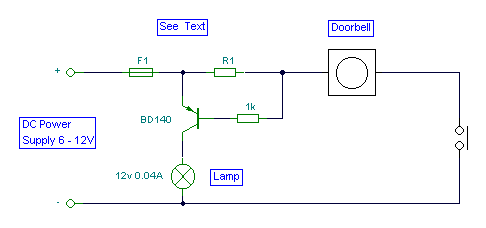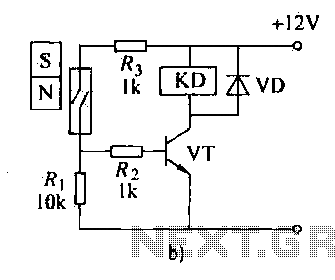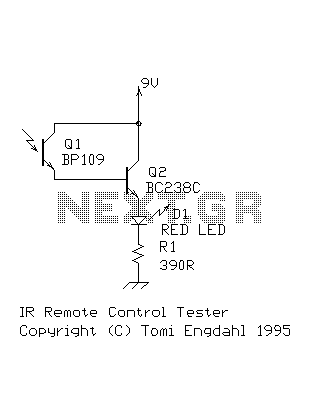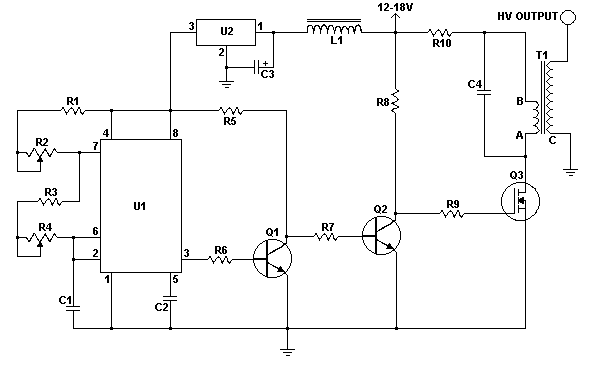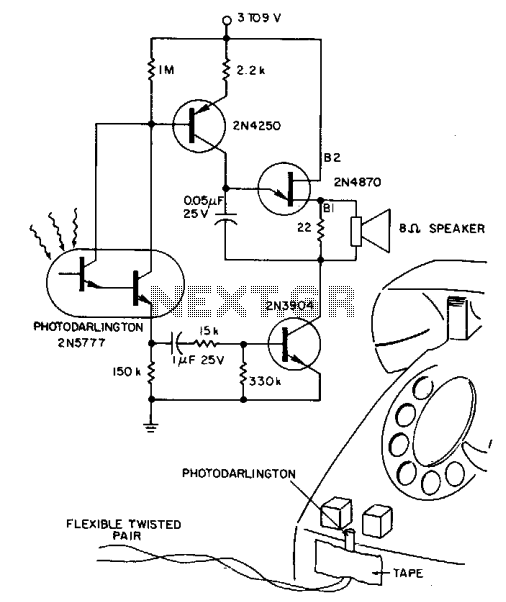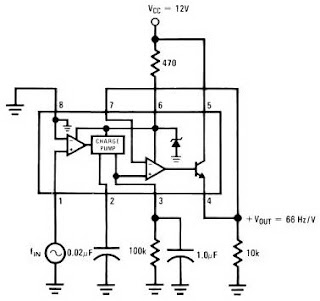
Video Signal Carrier Circuit
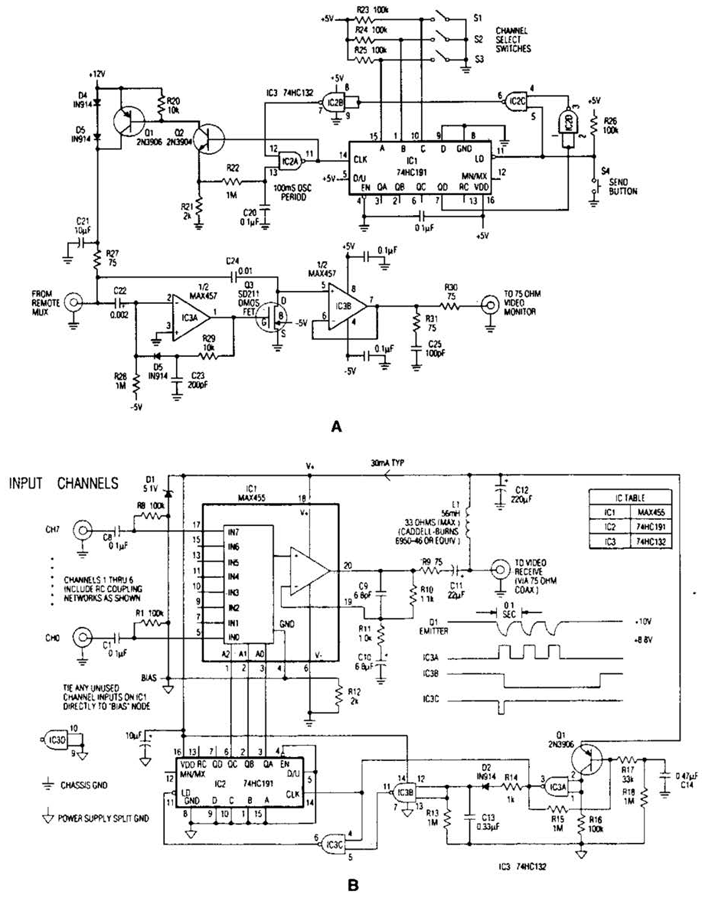
In the video system shown in Figs. A and R, a single coaxial cable transmits power to a remote location, selects one of eight video channels, and returns the chosen signal. This system can select from multiple remote surveillance camera signals and display the image on a monitor located near the interface box. The core component of the multiplexer box (A) is an integrated circuit (IC1) that combines an 8-channel multiplexer and an amplifier. Capacitor C1 couples the baseband video output of the multiplexer to the coaxial cable, while inductor L1 decouples the video signal.
The described video system utilizes a coaxial cable as a versatile medium for both power supply and video signal transmission. The 8-channel multiplexer allows for the selection of one of eight different video sources, such as surveillance cameras, enabling flexible monitoring options. The multiplexer, integrated with an amplifier, enhances the video signal strength, ensuring that it remains clear and strong over the distance traveled through the coaxial cable.
The coupling of the multiplexer’s output to the coaxial cable is achieved through capacitor C1, which serves to block any DC components while allowing the AC video signal to pass through effectively. This is crucial for maintaining signal integrity, as any DC offset could distort the video signal. On the other hand, inductor L1 acts as a decoupling element, filtering out unwanted high-frequency noise that may be present in the video signal, thus further ensuring the quality of the transmitted video.
The design of this system is particularly advantageous in applications requiring remote video monitoring, as it simplifies installation by reducing the number of cables needed. The use of a single coaxial cable streamlines the setup, reduces potential points of failure, and minimizes installation time and costs. Overall, this system exemplifies an efficient approach to video signal management in surveillance applications.In the video system of Figs. A and R, a single coaxial cable carries power to the remote location, selects one of eight video channels, and returns the selected signal. The system can choose one of several remote surveillance-camera signals, for example, and display the picture on a monitor near the interface box.
The heart of the multiplexer box (A) is a combination 8-channel multiplexer and amplifier(IC1). Cll couples the multiplexer`s baseband video output to the coax, and LI decouples the vi. 🔗 External reference
The described video system utilizes a coaxial cable as a versatile medium for both power supply and video signal transmission. The 8-channel multiplexer allows for the selection of one of eight different video sources, such as surveillance cameras, enabling flexible monitoring options. The multiplexer, integrated with an amplifier, enhances the video signal strength, ensuring that it remains clear and strong over the distance traveled through the coaxial cable.
The coupling of the multiplexer’s output to the coaxial cable is achieved through capacitor C1, which serves to block any DC components while allowing the AC video signal to pass through effectively. This is crucial for maintaining signal integrity, as any DC offset could distort the video signal. On the other hand, inductor L1 acts as a decoupling element, filtering out unwanted high-frequency noise that may be present in the video signal, thus further ensuring the quality of the transmitted video.
The design of this system is particularly advantageous in applications requiring remote video monitoring, as it simplifies installation by reducing the number of cables needed. The use of a single coaxial cable streamlines the setup, reduces potential points of failure, and minimizes installation time and costs. Overall, this system exemplifies an efficient approach to video signal management in surveillance applications.In the video system of Figs. A and R, a single coaxial cable carries power to the remote location, selects one of eight video channels, and returns the selected signal. The system can choose one of several remote surveillance-camera signals, for example, and display the picture on a monitor near the interface box.
The heart of the multiplexer box (A) is a combination 8-channel multiplexer and amplifier(IC1). Cll couples the multiplexer`s baseband video output to the coax, and LI decouples the vi. 🔗 External reference
